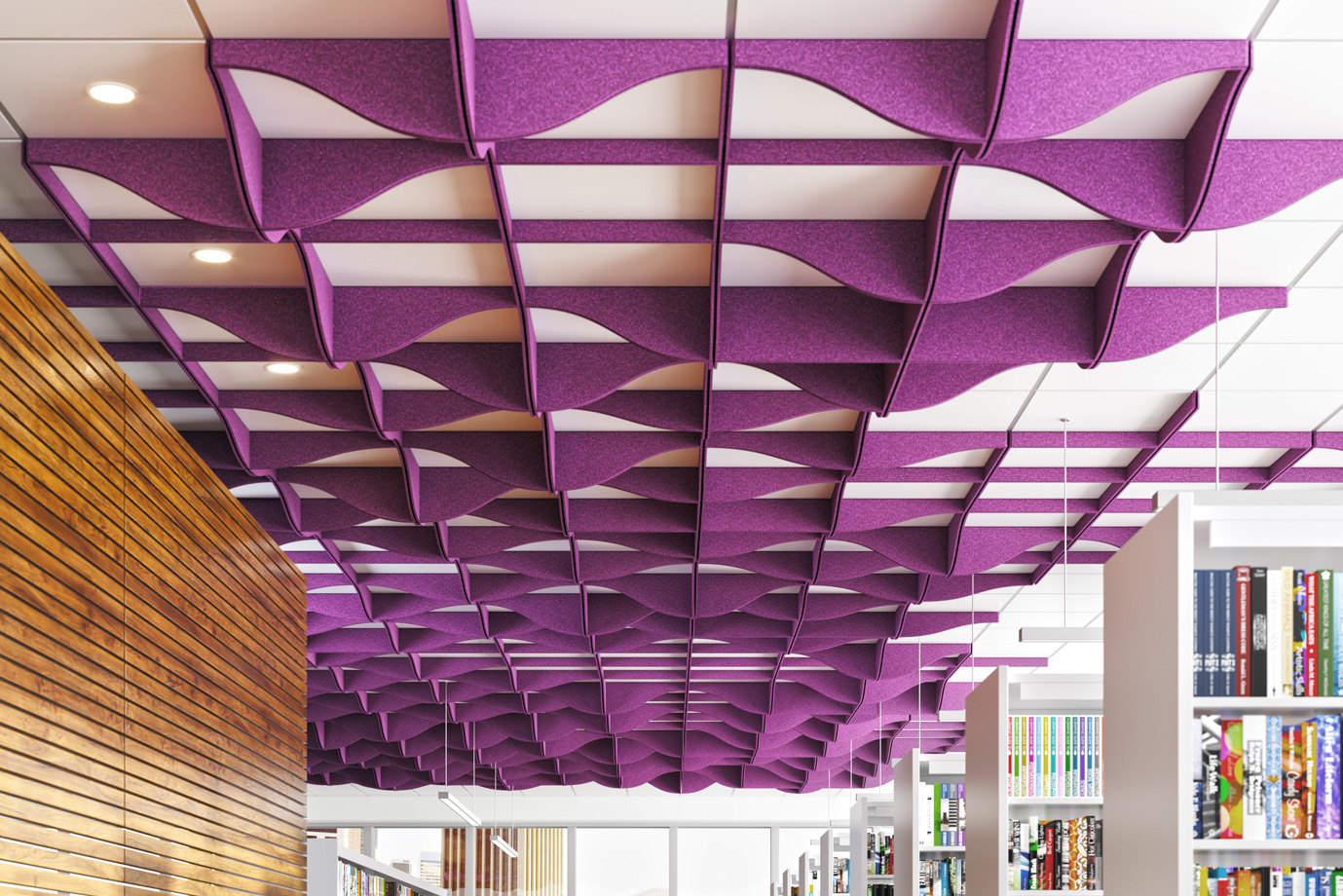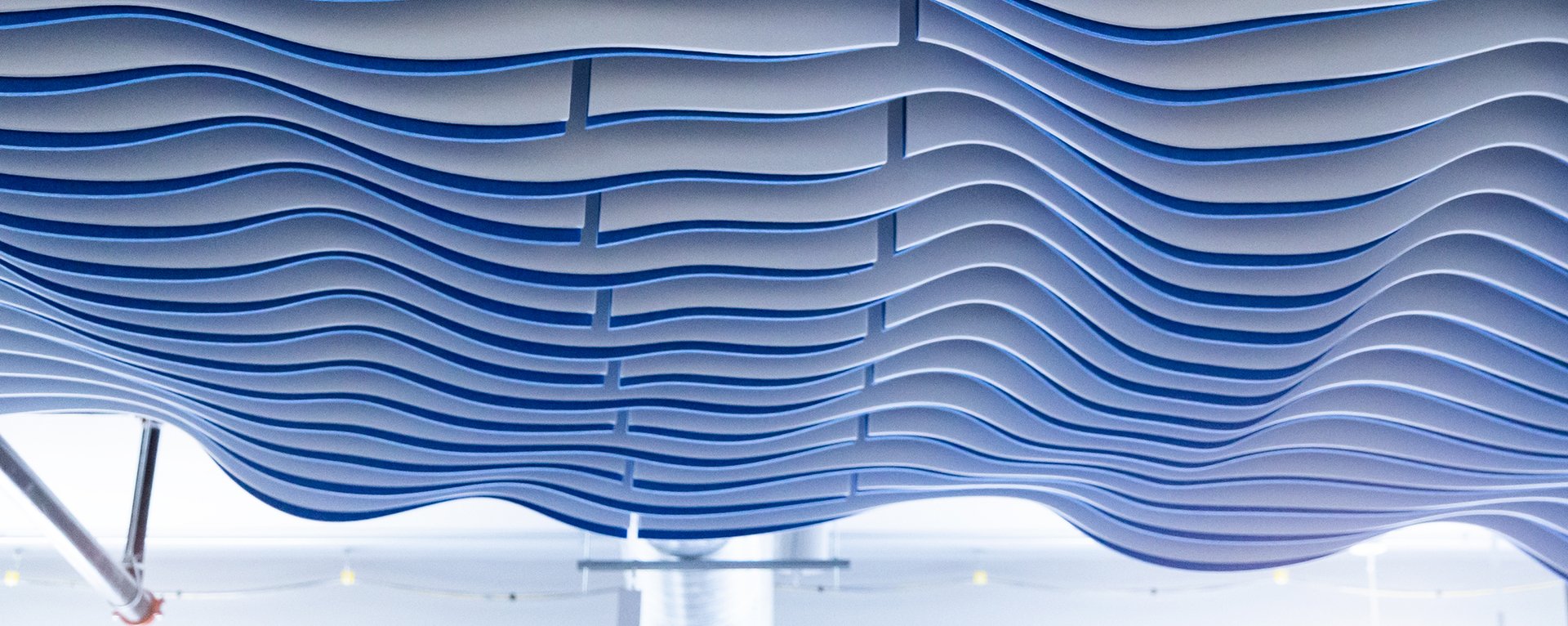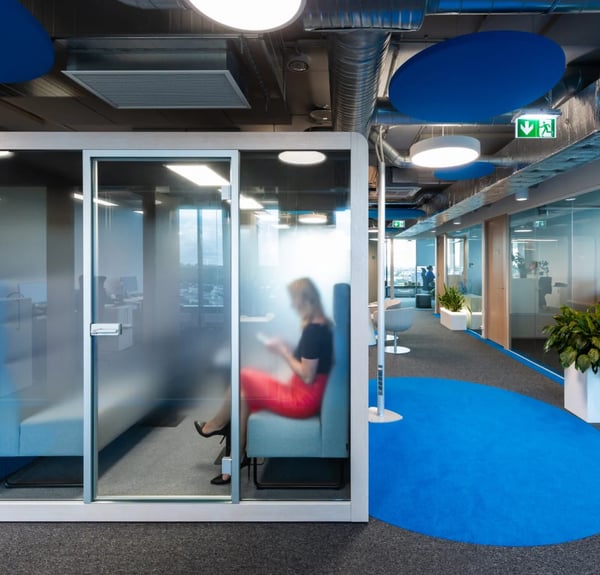In the last blog post, I stressed the importance of clearing clutter from your workspace. Although the post mainly focused on cleaning and organizing your desk, that is not the only “clutter” that you’ll be experiencing in today’s modern workspace. Yes, even noise can add to the clutter and distractions of an office. Especially as companies begin to transform into more open and modern office layouts. These redesigns may encourage more collaboration around the office but this open layout comes at a price.
Sound masking provides more than just a clean train of thought. It can also provide security to our clients who deal with confidential information on a daily basis.
Sound Adds Up
My first office took place in a sleek industrial loft. It had high ceilings, concrete floors, and although there were offices around the perimeter of the space, it was a primarily open office layout. Being an advertising agency, the open office concept worked perfectly when it came to collaborating on campaigns. I quickly appreciated the ability to easily ask for help or guidance from those working in arm’s reach of my desk. However, as time passed, I began to notice a flaw in the office’s modern design. The high ceilings and exposed concrete that gave the place its industrial look, also served as amplifiers for any little noise. When I say “any little noise” I mean it, thanks to the concrete floors you could hear a distinct rhythm of each coworker’s walk. Even if a group was meeting in the conference room, the sound still managed to echo out into the main office. With every sound being amplified, it quickly became a distraction filled atmosphere. Just like the clutter on a desk, the ambient sound of the office inhibited my ability to work. Luckily the company gave out free headphones to new employees, but this didn’t help for meetings or phone calls. You could never truly find a quiet place in the office. But the sleek industrial design isn’t deserving of all the blame. You see a workplace is naturally a loud and busy place. Even in my current office here at ICC, you can overhear the conversations and phone calls of my coworkers. Well at least that was the case until we started using sound masking techniques to cut down on the noise in our office.
Fighting Fire with Fire
Unlike your typical noise control methods that attempt to damper or absorb the sound waves, sound masking actually uses auditory technology to cancel out one’s ability to pick up on the ambiance sound of an office. In the words of one of the top manufacturers of sound masking technologies, “sound masking is specifically engineered to match the frequencies of human speech and to sound comfortable to the human ear.” When implemented properly, sound masking should just fade into the background “hum” of a workplace. Without the distraction of overhearing conversations of others, I am able to focus on my work. Whether it's intentional or not, you naturally lose your train of thought whenever you catch a bit of an outside conversation. Sound masking provides more than just a clean train of thought. It can also provide security to our clients who deal with confidential information on a daily basis. Two of the biggest proponents of sound masking in the workplace are lawyers and the health industry.
Office gossip is no joke for the health industry. A single HIPAA (Health Insurance Portability and Accountability Act) violation could set a company back $50,000. With risks that high, it’s not surprising that the health industry was quick to adapt sound masking technology as a way to ensure the privacy of their patients. That being said, every office has conversations that need to be confidential. Another noise control concept that some companies are beginning to adapt is the Silen Space. Instead of focusing on controlling the noise of the whole office, Silen Space focuses on providing offices with a dedicated silent space. Ranging in sizes from as small as a phone booth to as big as a conference room, Silen Spaces are up to 40dB lower than their surrounding outer offices. Thanks to the sound insulation technology, it stops noise from getting in and your private conversations from getting out.
A Step in the Right Direction
It’s understandable if you are still skeptical about the true effect that noise can have on an office’s efficiency. I was skeptical myself at first, that was until we started investing in noise management here at ICC’s office. Being a small office, we decided to start small. Fortunately, a company called Turf Design specializes in making a multitude of different sound management systems. We opted to go with the “Switchblade” ceiling system as it attaches to a tee grid with magnets, leaving existing ACT tiles untouched. So one Friday afternoon we decided to put up the Switchblade system just to test it out. Friday being Friday, especially in the afternoon, we didn’t seem to notice any change or effect. However, when Monday came along, something strange happened. It wasn’t until about midday that I noticed how quiet the office appeared to be. The reason I say midday is because I myself had been a steady workflow all morning. As I looked around the office to see if perhaps there were less people than usual, I noticed that my coworkers were experiencing the same increase in focus. I was surprised to see how much of a difference could be made simply by attaching something to our ceiling tiles. You too will be impressed by the impact that even the smallest change in noise control can do for your office.


Schedule a visit to our office furniture showroom where you will see and hear multiple sound management systems on display:
sound masking; sound masking systems; ambient noise level; ambient sound; speech privacy; sound masking system; human speech; speech noise



